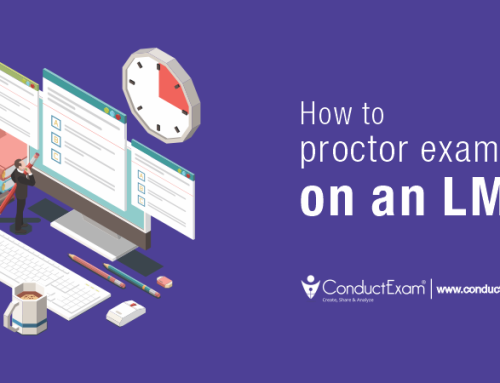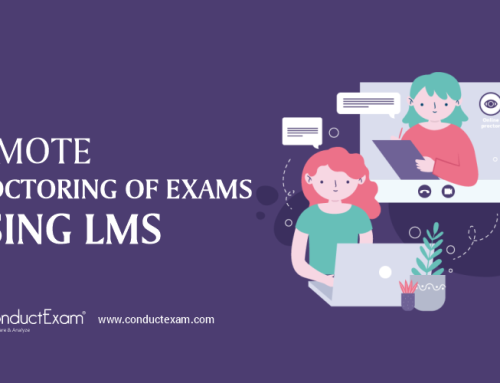Introduction
Often referred to as an LMS for short, a learning management system is a software tool that provides a system that manages all aspects of the learning process – it’s where you prepare, deliver, and track your training content. Although it is often called LMS, other names that can be used are Learning Management System, Project Management System, or even Learning Experience Platform. A Learning Content Management System (LCMS) is sometimes confused with an LMS. LCMS is software used to create and manage educational content. Both systems are supported but not identical.
LMS is designed to make life easier for those responsible for training and development, for example by identifying and evaluating individual and organizational learning goals, monitoring progress toward achieving these goals, and collecting and displaying data to evaluate the learning process.
Why Should one use LMS?
If you’re still confused about what a learning management system is and why you should have one, let’s discuss it.
Cost savings: Training and education through an LMS reduces employee travel, maximizes training and implementation costs, and reduces equipment and instructor fees. From a financial perspective, an LMS is a no-brainer.
Training Agreement: Training and course delivery through LMS is flexible because it is centralized. It provides consistent quality training and education to all employees by providing the same content, courses, and tutorials.
Benefits Track Student Progress and Performance: LMS allows businesses to easily generate training reports at aggregate or employee/student levels. By using an LMS for eLearning courses and/or online training, trainers can easily track goal progress, knowledge gains, ROI, and more.
Meet regulatory compliance: Many companies may need to train, monitor, and report for compliance purposes. Some of these industries are oil and gas, pharmaceuticals, telecommunications, and building and construction. An LMS can help you meet legal and regulatory requirements. In general, learning management systems have more features than listed. However, these are the most popular selling points and key indicators for whether you and your organization can benefit from an LMS.
Benefits Of Learning Management System
1. Manage eLearning Content in One Place.
Instead of spreading your eLearning content across different drives and devices, you can store all of your eLearning content in one place. This reduces the chance of losing important data and makes it easier to design your eLearning course. Any member of your eLearning team can also access the information if you use a cloud-based Learning Management System because it is stored on a remote server. This makes learning management systems a natural choice for online collaboration.
2. Provides unlimited access to online learning.
Once you upload your eLearning course materials to the LMS and publish them, your audience has unlimited access to the information they need. Even those who attend can access the eLearning platform from their smartphones and tablets, so they don’t have to wait for the next online training session to build skills and work-related skills. This is one of the main reasons why LMS is important for a global audience in different time zones.
3. Easy to Track learner’s performance
The best learning management systems give you the power to track the progress of learners and ensure they reach their career goals. For example, if an online learner cannot successfully complete an eLearning presentation, you can provide them with additional resources to improve their performance or learning behavior. Most learning management systems offer reporting and analysis tools that also allow you to identify areas of your eLearning process that may be lacking, as well as areas where it excels. If you find that many of your online learners struggle with one online course, for example, you can review the eLearning content and make adjustments as needed.
4. Reduces learning and development costs.
A learning management system enables you to completely eliminate the cost of instructor travel, e-learning site rentals, and printed e-learning materials. Your online learners can do all their training online, which means you can save a lot of money on your learning and development expenses. For example, you don’t have to worry about printing 500 books and booking a hotel room for your teacher, because all the information that online learners need is available in the LMS.
5. Reduces learning and development time.
A learning management system can reduce online training time because it provides online learners with only the information they need in an accurate and structured way. Instead of going through a half-hour online training course, online learners can click on the online module they want and get the knowledge in less time. They can also test their understanding by taking online tests or quizzes, participating in interactive situations and demonstrations, and watching e-Learning videos that demonstrate complex processes or tasks.
6. Keeps the company up to date with compliance standards.
If your organization needs to update current compliance standards, a learning management system can be a useful tool. Compliance laws are constantly changing, and updating traditional systems to reflect these changes can be a time-consuming task. However, using an enterprise learning management system gives you the ability to add new admission standards to your online courses in minutes. Therefore, your apprentices can stay abreast of the latest compliance regulations they need to know, so your organization can avoid costly fines. Additionally, you have the ability to ensure that every employee is on the same page when it comes to company expectations and policies, which increases customer satisfaction and reduces employee turnover.
7. Integrating social learning experiences.
Learning management systems make it easy to integrate interactive learning into your eLearning strategy. Since the LMS already exists, you can include links to Facebook and Twitter pages, LinkedIn groups, and online forums that may be useful to your learners. You can also market your eLearning on social media to attract new students, and create eLearning programs that focus on peer-to-peer collaboration.
Types Of LMS software
Academic vs. Corporate
Both academic LMS and corporate LMSs provide access to course materials online, but they have some differences.
Learning goals
Academic learning produces good students that have deep knowledge of the subjects and are eager to learn more about them. Here, theoretical knowledge is the end goal. Corporate training focuses on learning connections and practical applications, and one of its main objectives is the return on investment.
Program
For employee training, the timeline is short, so the company’s learning management system must change to accommodate all timelines and business needs. Semesters and locations in the region – These are ancient educational schools. For them, LMS should give people who do something like a holiday, hour test, and law. Certificate vs Grade
Corporate education programs often provide opportunities for tracking and completion in the form of certification. An educational LMS often tracks learner progress through its scoring system. It provides a notebook for monitoring attendance and homework results, as well as keeping other information about each student in the register. Socialized social networks
Another identification of education is the ability to create a student for work and a web organization.
Content Update
The content of students requires science and science and science; This is why studies do not need to update it. Since the market wants to change quickly, LMS company will have access to improvement amount and easy.
Cloud LMS vs Locally Hosted LMS
You can choose a SaaS (Software as a Service) LMS or store the data on your company’s servers. If you decide to host the system yourself, you are responsible for all server details, availability, and security. If you choose a SaaS system, your LMS provider will take care of server load, backups, and everything else related to storing your training data. This is the best solution if you don’t have IT staff who can manage the system and handle support, configuration, and scalability issues. Instead of spending time managing an LMS, you can focus on creating educational content.
Some companies shy away from cloud-based learning management systems due to data security concerns. They thought that their information stored on remote servers could be compromised. However, there are different ways to protect your data. For example, make sure the LMS provider has strong privacy policies and will protect your information.
Recommended: Remote proctoring of exams using LMS
Conclusion
Keep in mind that finding the perfect LMS for your needs is the only way to truly reap the benefits of a learning management system. So, take advantage of the free trial, review features and pricing options, and read reviews from other eLearning pros who have used the tool before. This will allow you to get the best out of the learning management system and create successful eLearning courses. You can also get an LMS customized for your needs in just three minutes. This simple five-step process will help you find the learning management system that’s right for you.





Leave A Comment